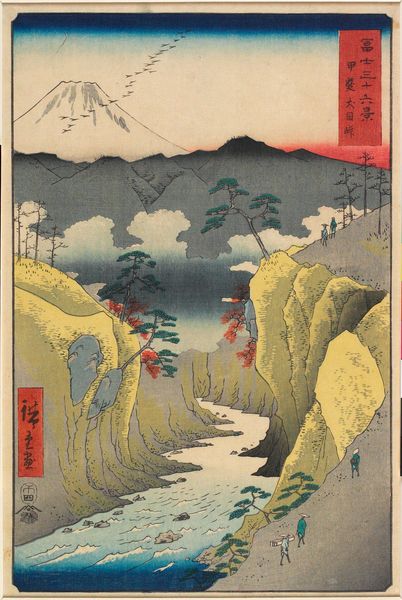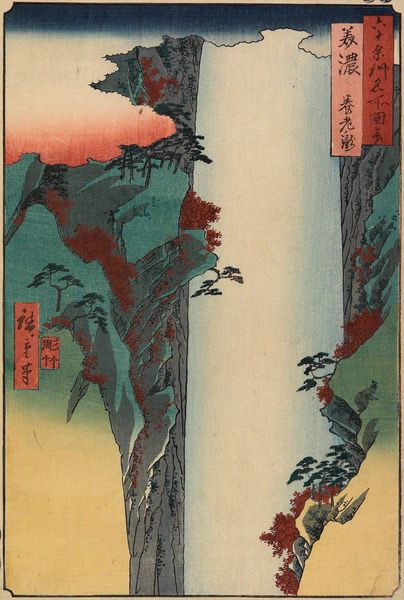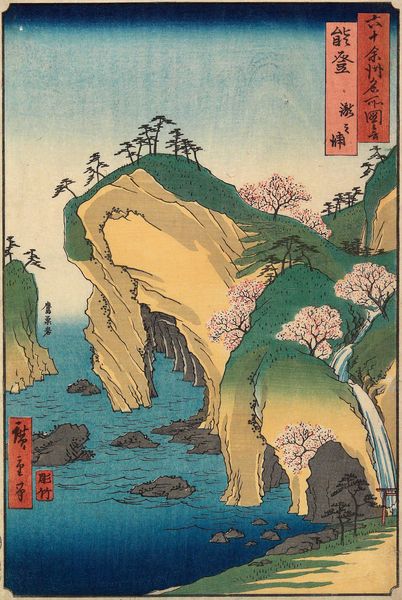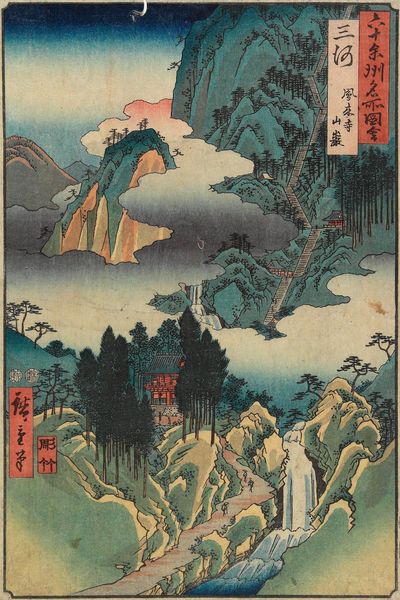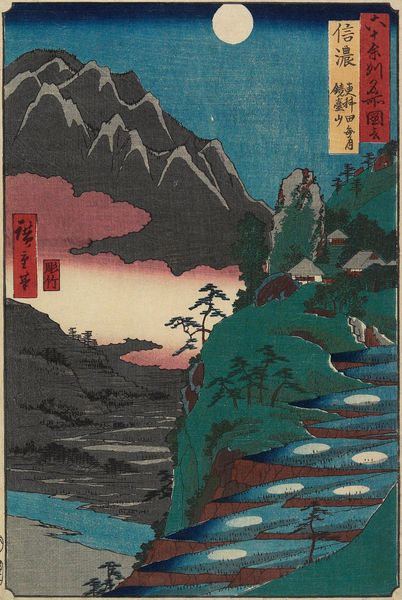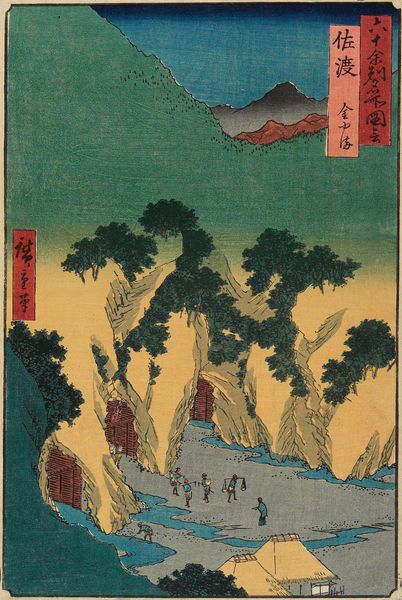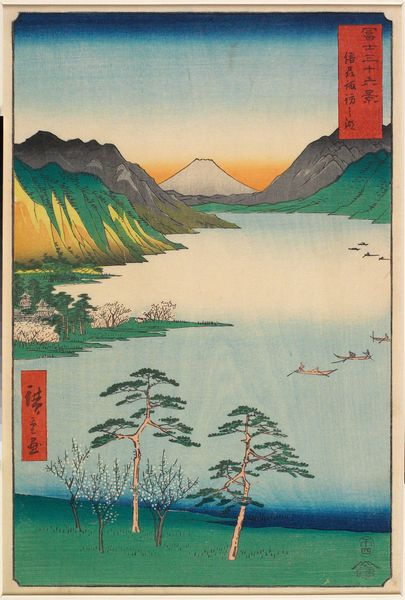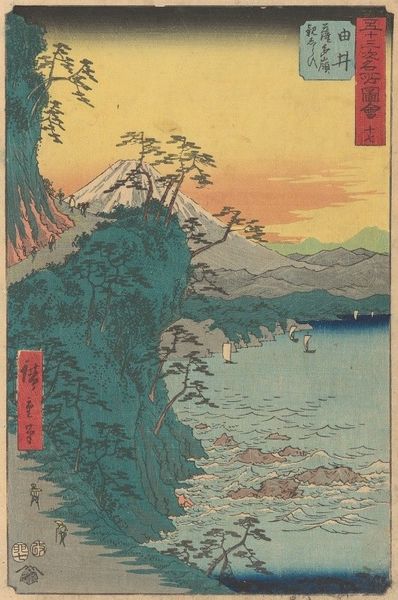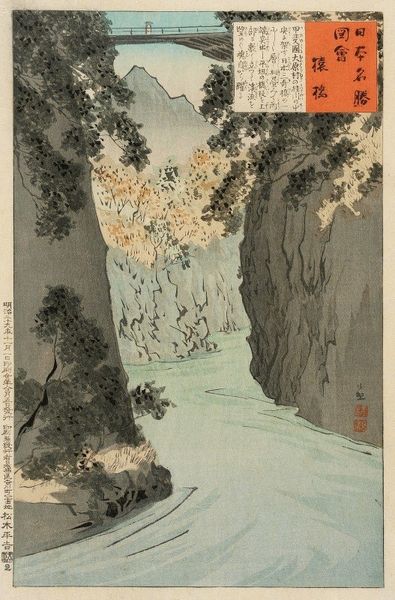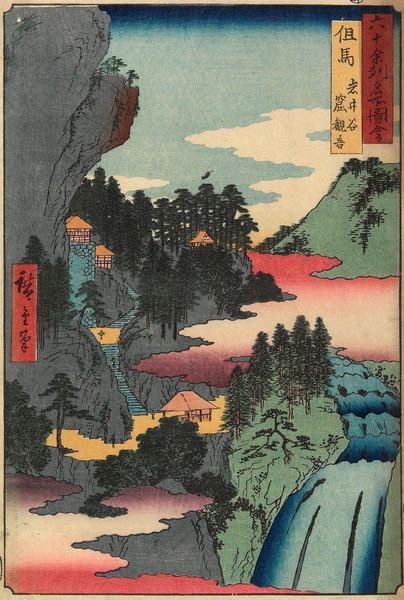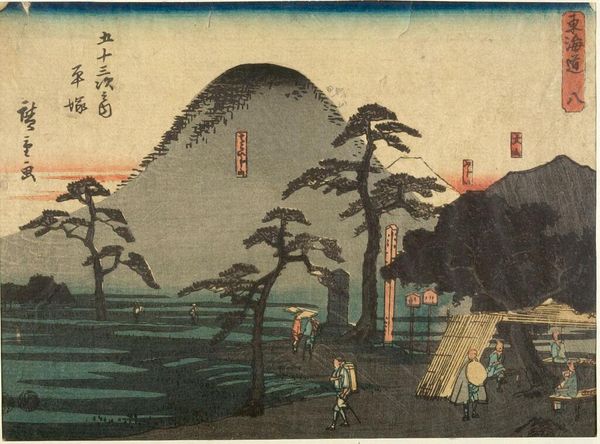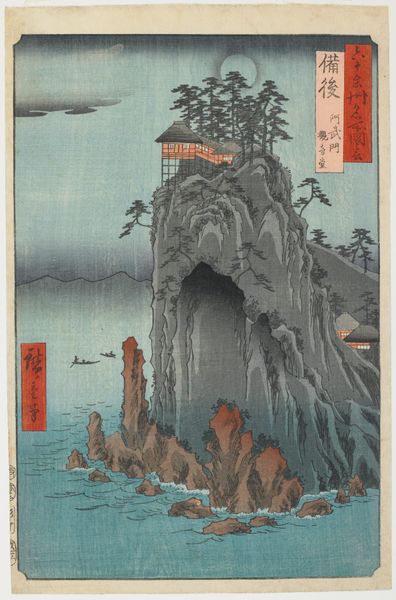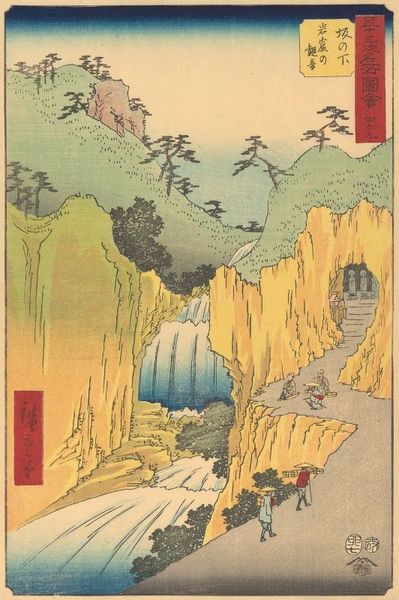
print, ink, woodblock-print
# print
#
landscape
#
ukiyo-e
#
ink
#
woodblock-print
Dimensions: 13 3/8 × 8 13/16 in. (34 × 22.4 cm) (image, vertical ōban)
Copyright: Public Domain
Editor: We're looking at "Gokanosho Village in Higo Province," a woodblock print, possibly from 1856, by Utagawa Hiroshige. I’m really drawn to the contrast between the vast landscape and the small figure traversing the bridge; it feels almost like a comment on humanity's place within nature. How do you interpret this work? Curator: It’s interesting that you’re immediately drawn to the scale. This was produced in a time of significant political and social tension in Japan, as the Tokugawa shogunate faced internal struggles and external pressures to open the country to the West. Ukiyo-e prints, while seemingly depicting idyllic scenes, were also a form of social commentary. Consider that lone figure on the bridge. Does it suggest something about isolation, resilience, or perhaps even resistance in the face of larger societal forces? What kind of journeys were people making during this period? Editor: That’s a fascinating perspective. I hadn't considered the possibility of a political undertone, given the tranquil feel. I guess the journey of that individual could be interpreted in many ways— escape, exploration, or even forced relocation, given the instability of the era. Curator: Precisely. Landscape prints weren't simply records of beautiful places. They also subtly encoded the socio-political climate of the time. Look at the way Hiroshige frames the village within this imposing landscape. It's not just pretty; it's about the power of place and the struggles played out within it. Is there anything about the style itself, or the medium of the print, that resonates with you from this point of view? Editor: I think that understanding this print within its historical context adds so many layers to my appreciation. I'm now much more aware of how landscape art, in general, can reflect power structures and narratives of resistance. Curator: Absolutely. Art is never created in a vacuum. Exploring the relationship between artistic expression, social upheaval and politics adds invaluable layers to any work.
Comments
No comments
Be the first to comment and join the conversation on the ultimate creative platform.
